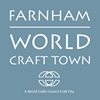History and Origins
Farnham
History & Origins
Farnham is a thriving and historic market town nestled within the Surrey Hills and located less than an hour from London and the coast. Sitting on the banks of the River Wey and surrounded by woodland, the town is crowned by a magnificent deer park and castle.
Farnham has a vibrant community feel and combines a rich tradition of craft with a modern and innovative outlook.
A stroll through its central conservation area and charming network of passages reveals hidden parts of the town’s history and gives a glimpse into its heritage of craft and making.
The area has been populated since the Ice Age – making it older than Stonehenge and the Pyramids.
Evidence of a flint-knapping industry some 7,000 years ago was discovered a short distance to the east of the town, demonstrating the town’s prehistoric links with craft.
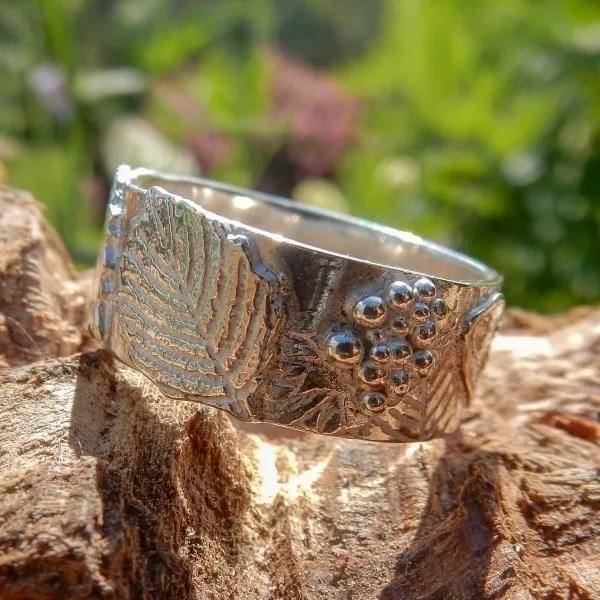
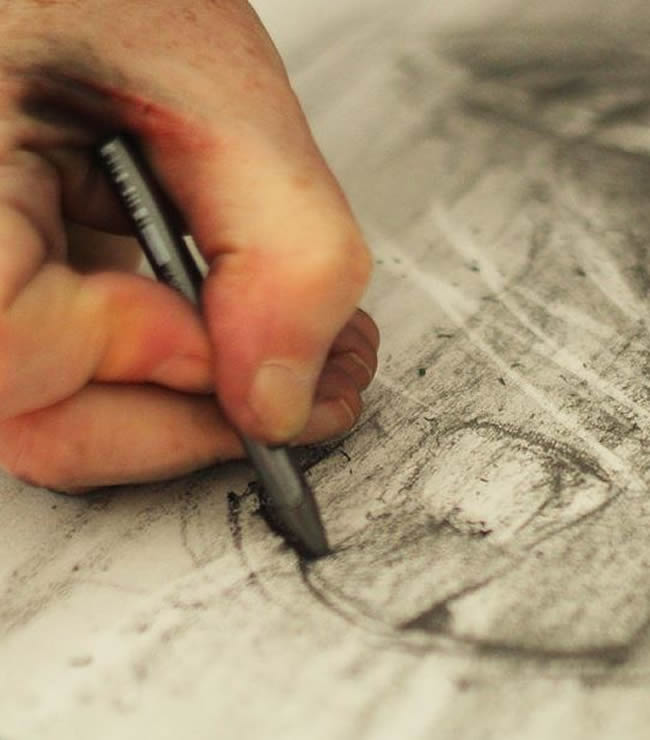
Farnham’s geographical position has made it an important crossroads for centuries.
Bronze and Iron Age people used the town as a junction for their track-ways and occupation of the area continued to grow.
During the Roman period, Farnham became a centre for pottery and known for its ‘whiteware’ due to the plentiful supply of gault clay, oak woodlands for fuel, and good communications via the Harrow Way, Pilgrim’s Way and the nearby Roman road from Silchester to Chichester. It is the local clay that provides the warm red brick and tiles, which give the town its distinctive character, together with the ironstone cobbles along its numerous footpaths and alleyways.
A Roman villa and bath were found on the site of Roman Way, now a residential estate and kilns dating from about AD 100 have been found throughout the area. The main centre of pottery was at Alice Holt Forest, created just seven years after the arrival of the Romans, and continuing in use, making mainly domestic wares, until about AD 400.
This thriving tradition of pottery continues to this day.
A Saxon community then grew up in the valley
A Saxon community then grew up in the valley by the river giving the town organised agriculture, its parish church (now St Andrews’) and also its name, ‘Fearnhamme’, roughly translated as ‘well-watered meadow by the ferns’. Most of the town’s local names are derived from the Saxon language and the town’s links with craft continued with the discovery of several Saxon weaving huts from circa 550AD in 1924 at Saxon Croft, just off Firgrove Hill.
By 803AD, Farnham had passed into the ownership of the Bishop of Winchester and so it remained (apart from two short breaks) for the next thousand years. By 1086, Farnham appears in the Domesday Book as Ferneham, one of the five great minster churches in Surrey. Its assets included 40 hides; one church, six watermills and 43 ploughs.
In 1138, Henry de Blois (grandson of William the Conqueror) started building Farnham Castle to provide accommodation for the Bishop of Winchester in his frequent journeying between his cathedral and the capital. The castle’s garrison provided a market for farms and small industries in the town, accelerating its growth. The palace and deer-park were added in the 13th century, and remain treasured spaces to this day. The castle’s architecture reflects changing styles through the ages and it has become one of the most important historical buildings in the south of England. Monarchs and noblemen became regular visitors to the town including King John, Queen Victoria and Henry VIII. When Elizabeth I visited, she bought her Court along too and ran the country from Farnham for six months. Later, during the Second World War, the castle became the home of the Camouflage Development and Training Centre (CDTC) of the Camouflage Branch of the Royal Engineers. Here, artists such as Roland Penrose and Julian Trevelyan as well as the magician Jasper Maskelyne were trained in the art and craft of military camouflage.
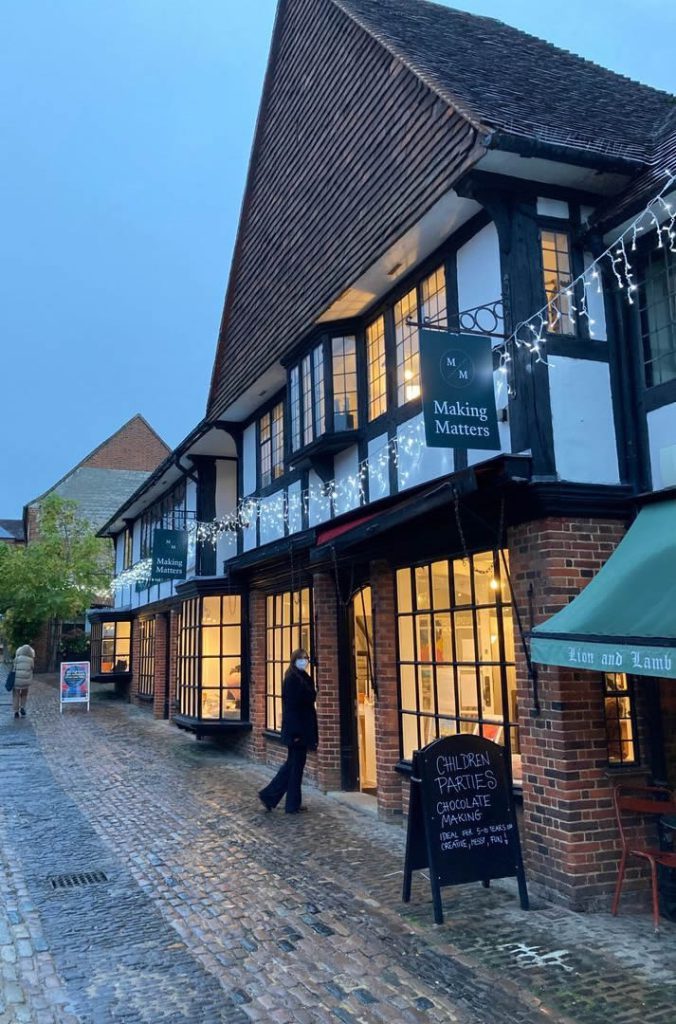
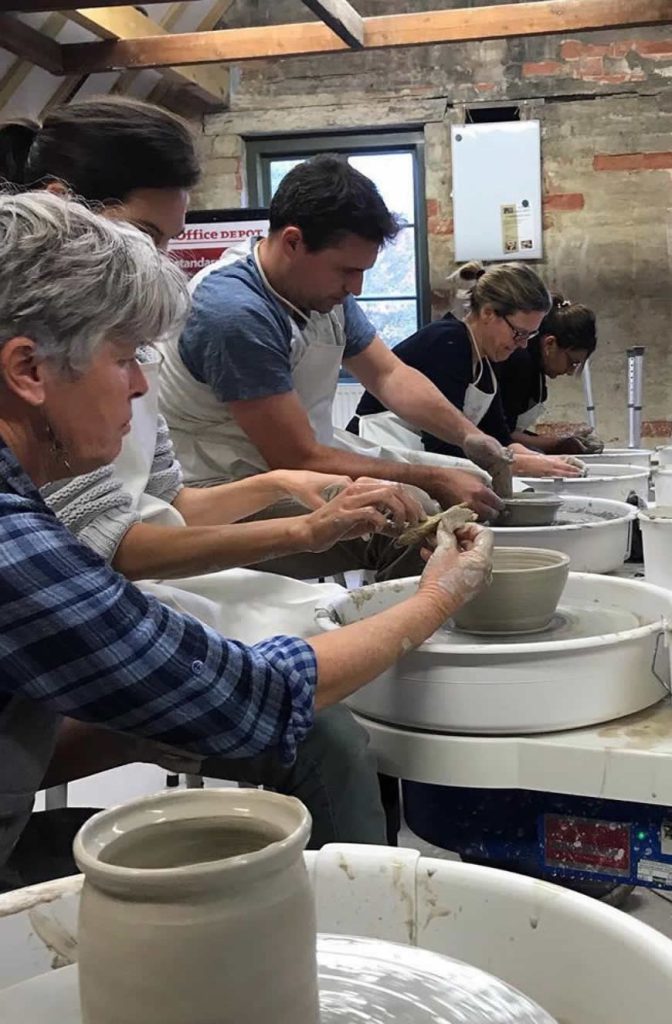
The Middle Ages saw people coming from all over Hampshire and Surrey
By the beginning of the 13th century the village of Farnham had grown into a town and was awarded its town charter in 1249 by the then Bishop of Winchester. Its location, midway between Winchester and London naturally led to trade and the town’s weekly market and annual fair became so successful that they rapidly developed into some of the largest in the area.
The Middle Ages saw people coming from all over Hampshire and Surrey to buy and sell at a Farnham fair and we know that wool was being manufactured in Farnham at this time. The Black Death hit Farnham in 1348, killing about 1,300 people, at that time about a third of the population.
In the 16th and 17th centuries, the wool cloth industry in Farnham prospered and became an important industry in the town. The wool was woven and then fulled. Fulling involved pounding the wool in a mixture of water and clay to clean and thicken it. The wool was pounded by wooden hammers worked by a watermill. The pottery industry also continued to be important and by this time the town was well known for its pots and was a major supplier to London.
In 1625 Farnham was again subject to an outbreak of the plague which, together with a severe decline in the local woollen industry (the local downland wool being unsuitable for the newly fashionable worsted) led by the 1640s to a serious economic depression in the area. Local wool merchants were, like merchants throughout the country, heavily taxed by Charles I.
Against this background the English Civil War began, with Farnham playing a major part.
The castle, continuing to stand guard over Farnham, was considered a potential rallying point for Royalists, resulting in the installation of a Roundhead garrison there in 1642. Farnham would continue to be garrisoned by Parliamentary soldiers until the end of the First Civil War in 1646. In 1648 after the Second Civil War, the castle was ordered to be ‘made indefensible’ in case it was seized by Royalist sympathisers, and the following year King Charles stayed in the town (at Vernon House now the library) on his way to his trial and eventual execution.
Wheat and hops also grew in the rich soil of Farnham Valley, bringing the town further prosperity, particularly as drinking habits changed from ales to bitters. Farnham’s hops were considered to be the very best, commanding a great premium on the London market. The wealth generated made the growers rich and they built the finest domestic-scale Georgian houses in the country. Castle Street remains one of the most striking Georgian streets in England with its imposing facades and impressive width, as it rises towards the castle. The small market at the foot of the street, near the old Corn Exchange, serves to remind the town of its past.
The Victorian era saw Farnham’s emergence as a town with a special leaning towards craft and the hugely successful Farnham Pottery in Wrecclesham developed a national reputation for its distinctive style of work known as Greenware (so called because of the copper-green glaze).
Farnham continued to change and develop in the 19th century with the opening of the railway station in 1849; the arrival of gaslight in 1834; the construction of the army camp at nearby Aldershot in 1854 and a network of sewers in the 1880s. These developments helped secure Farnham’s future as a market town.
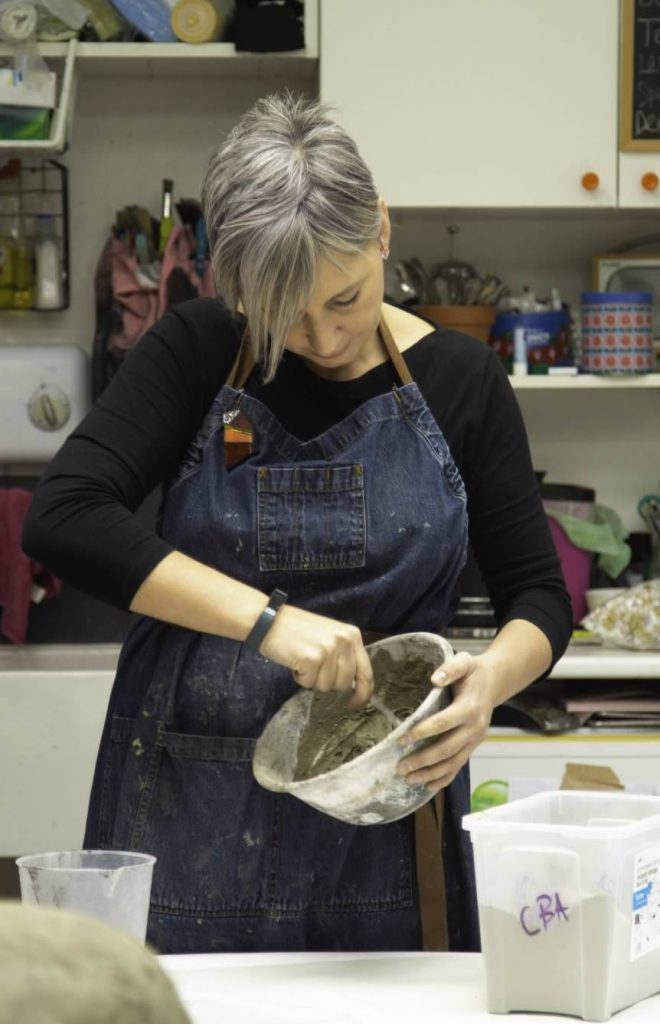

The 20th century saw the creation of a number of craft organisations
Farnham School of Art opened in 1866 and was associated with the arts and crafts movement when architects such as Edwin Lutyens and Harold Falkner, painters such as George Watts and W.H. Allen, potters such as Mary Watts and landscape gardeners such as Gertrude Jekyll worked in the area. The school promoted the education in craft subjects as part of its curriculum, and a powerful reputation was developed that has lasted throughout the 20th century and to the present day. Craft courses at undergraduate and postgraduate levels are offered at the University for the Creative Arts at Farnham, the successor institution to the Art School. Craft courses in jewellery, metalwork, glass as well as in textiles and ceramics offer today’s emerging craft makers unrivalled opportunities in some of the best equipped studios and workshops in any specialist university in the country.
The 20th century saw the creation of a number of craft organisations which are thriving to this day and which continue the tradition of craft which began in Farnham all those centuries ago. The Museum of Farnham opened in 1961; the Farnham Maltings, previously a tannery and a brewery, was opened as a centre for creativity in 1969; the Surrey Institute of Art and Design was also opened in 1969; the Crafts Study Centre in 1970 ; the Rural Life Living Museum in 1973 and the The New Ashgate Gallery in 1976. Farnham is home to both world-renowned craft artists and to the next generation of emerging makers with craft continuing to sit at the heart of Farnham’s distinctiveness.
Buildings throughout the town now recall this rich history of making and illustrate how craft makes Farnham such a unique and distinctive place. Many of these buildings are brought to life in the industrial heritage and art trails. If you want to learn more about the history of craft within the town then try exploring the Museum of Farnham with its dedicated gallery for Greenware and the unrivalled collections of the Crafts Study Centre.
